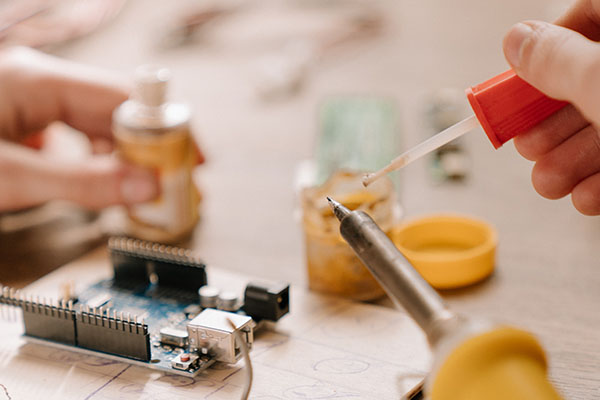
In the previous , we talked about the reasons for the solder balls in SMT chip processing. Next, we continue to share how to prevent the generation of solder balls in SMT manufacturing. Given the causes of solder balls, you can apply various techniques and measures during the manufacturing process to prevent.

1: Select the solder paste that meets the requirements of SMT
The choice of solder paste affects the final soldering quality. Solder balls tend to form when the solder paste has improper metal content, oxidation, IMC particles and pad thickness. Before deciding on solder paste, it must be tested to confirm whether it can be applied to batch SMT placement. View AiXun online selection of high quality solder paste flux!
2: The steel mesh opening should be correctly designed
The thickness of the steel mesh should be properly designed, and the opening ratio must be strictly controlled. Relatively thinner stencils should be chosen and thicker stencils should be avoided. When the ratio of the opening of the stencil and the shape of the opening are not suitable, some defects may be caused, resulting in the generation of solder balls. When the openings are not proportioned properly, solder paste tends to print on the solder mask, which can form solder balls during reflow soldering.
3: The quality of stencil cleaning should be improved
The improvement of the cleaning quality of the stencil is conducive to the improvement of the printing quality. During the soldering and printing process, the surface of the stencil should be carefully cleaned, and the residual soldering should be removed in time to prevent the formation of solder balls during the reflow process. If the stencil is not cleaned properly, the solder paste left at the bottom of the stencil opening will accumulate around the opening, making it easy to generate solder balls.
4: The installation stress should be reduced
Mounting stress is also a major cause of solder balls, but is rarely noticed. Mounting stress depends on several factors such as PCB thickness, component height, and chip mounter nozzle pressure settings. If the mounting stress is too high, the solder may be extruded to the outside of the pad, and after reflow soldering, the extruded solder may become a solder ball. To solve this problem, the mounting stress can be reduced to the point where the component can be placed on the solder pads printed on the pads and can be properly depressed. Different components require different levels of mounting stress, so it should be set appropriately.
5: The solderability of components and pads should be improved
The solderability of components and pads affects the generation of solder balls, if both parts and pads suffer from severe oxidation, some flux will be consumed due to excess oxide, thus also due to incomplete soldering and wettability Solder balls will occur. Therefore, the input quality of components and PCBs must be guaranteed.
6: The soldering temperature curve should be optimized
Solder balls are actually generated during the reflow soldering process, which includes four stages of preheating, temperature rise, reflow soldering and cooling. The purpose of preheating and temperature increase is to reduce thermal erosion to PCB and components, to ensure that the melted solder paste can be partially volatilized, to prevent collapse or spatter caused by excessive temperature rise, which is the main cause of solder balls.
To obtain the best temperature profile in a reflow oven, the solution is to control the reflow temperature and prevent the temperature from rising too quickly during the preheating phase. The heating rate should be controlled below 2°C/s, and the temperature of solder paste, components and pads should be controlled within the range of 120°C to 150°C. As a result, thermal attack on the assembly during the reflow soldering phase can be reduced.
7: Other elements should be well controlled
The optimum temperature range for solder paste printing is 18 to 28℃ and RH is 40% to 70%. If the temperature too high, the viscosity of the solder paste will decrease, and if the relative humidity too high, the solder will absorb more water. In both cases the result is the generation of solder balls. Therefore, the temperature and relative humidity in the workshop should be controlled.
Check your production process carefully to see where you can apply the above steps to prevent solder balling in SMT manufacturing.
 WhatsApp
WhatsApp